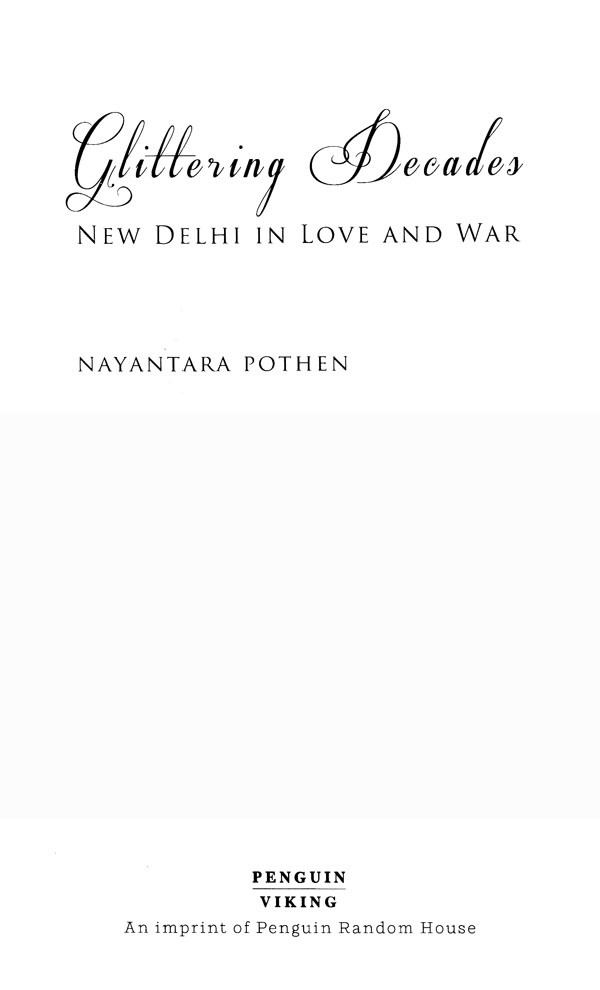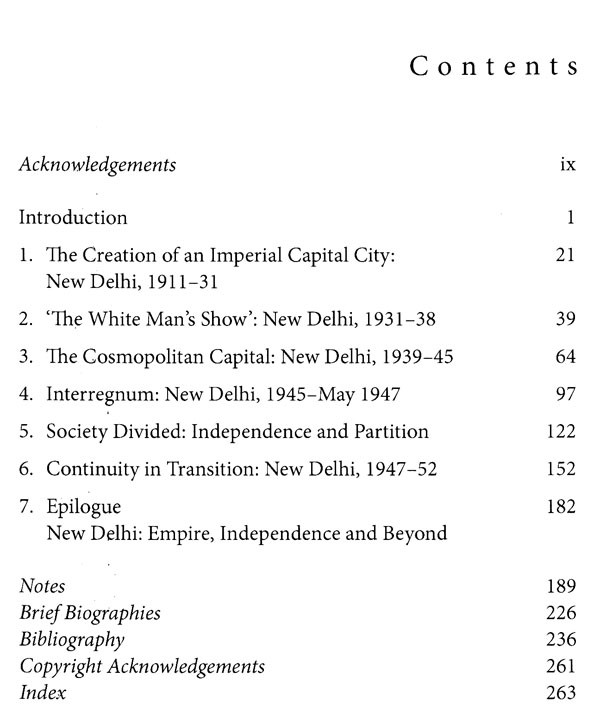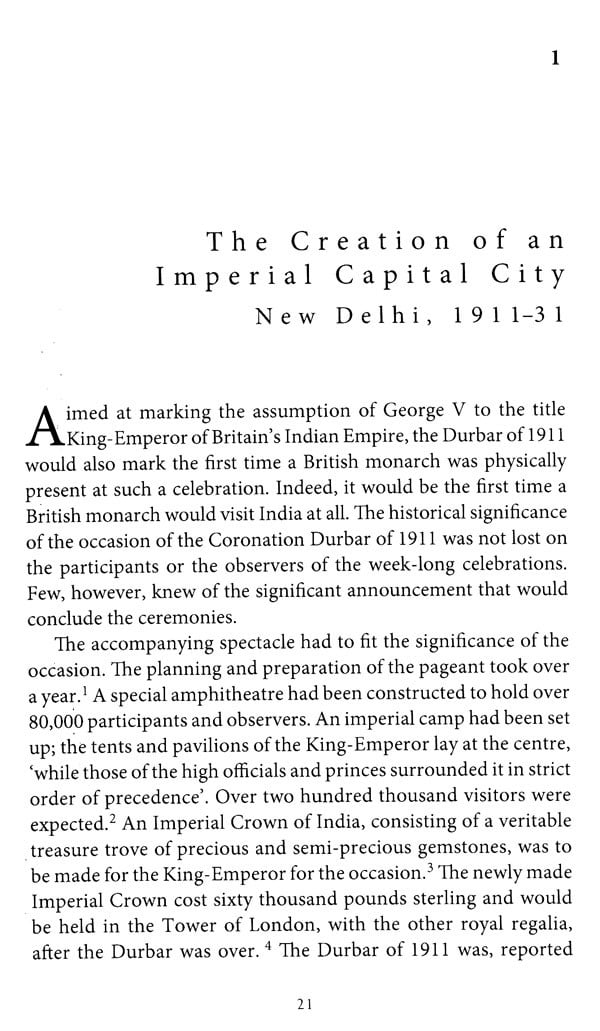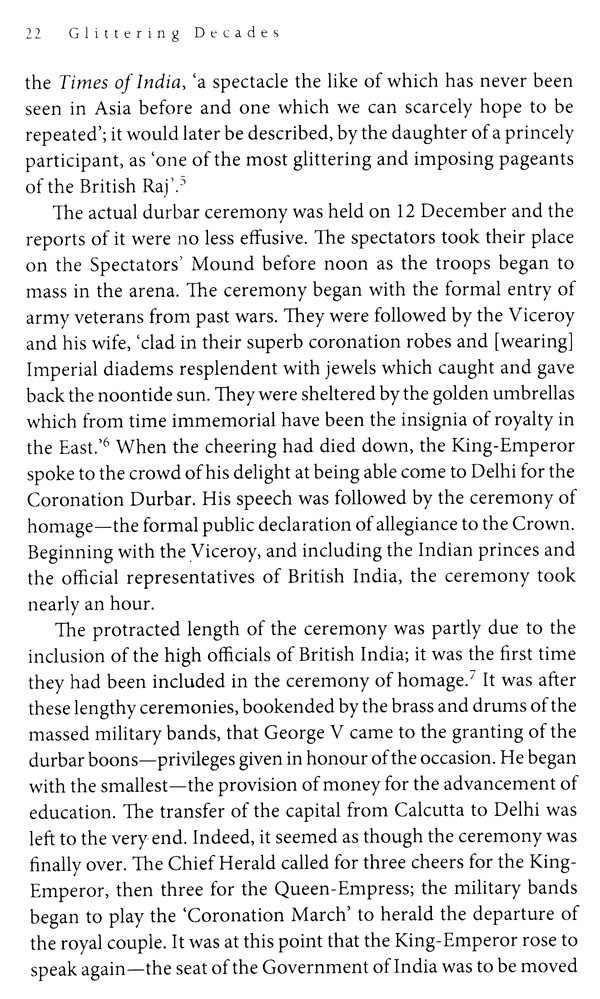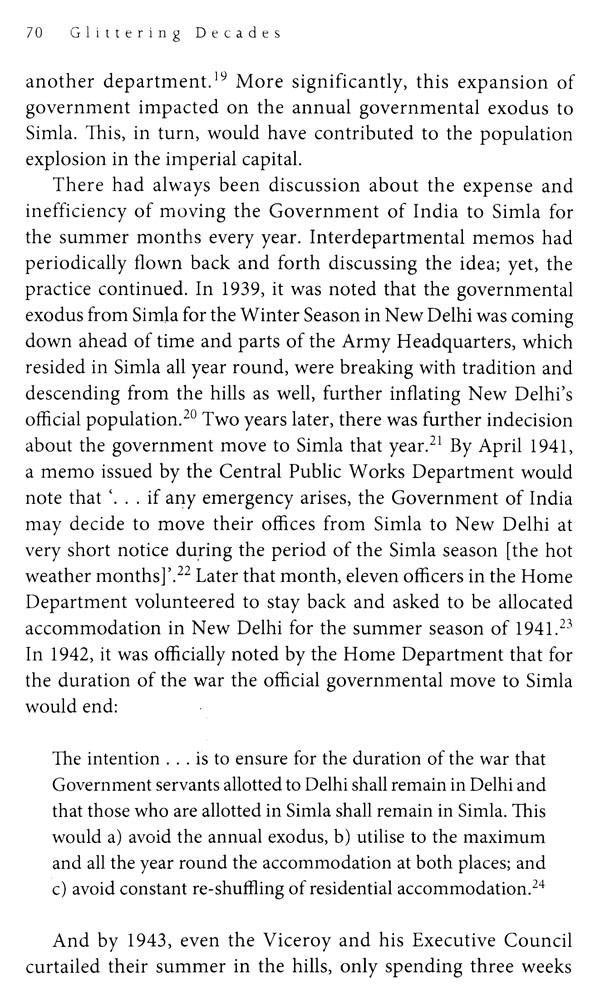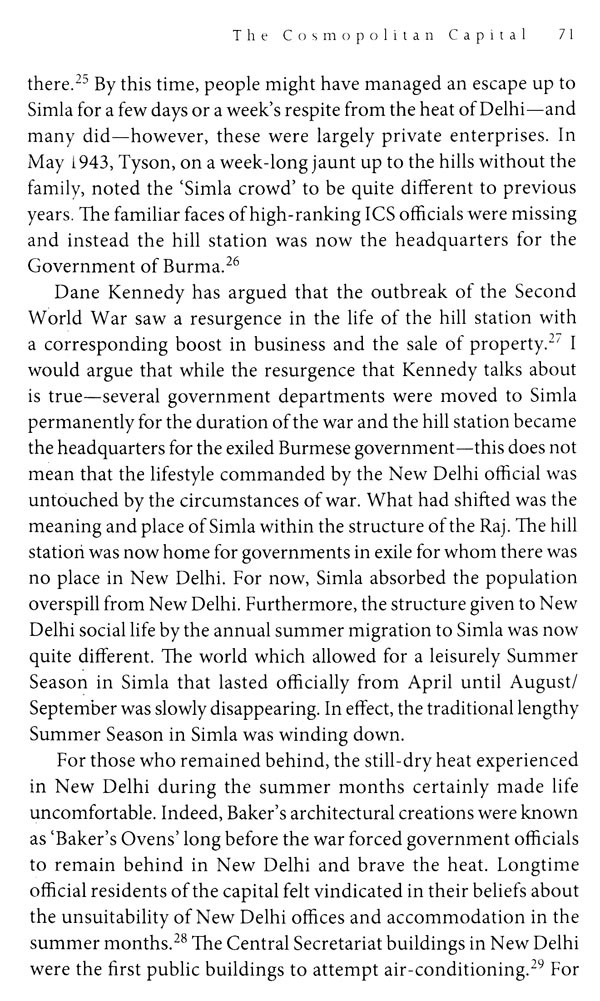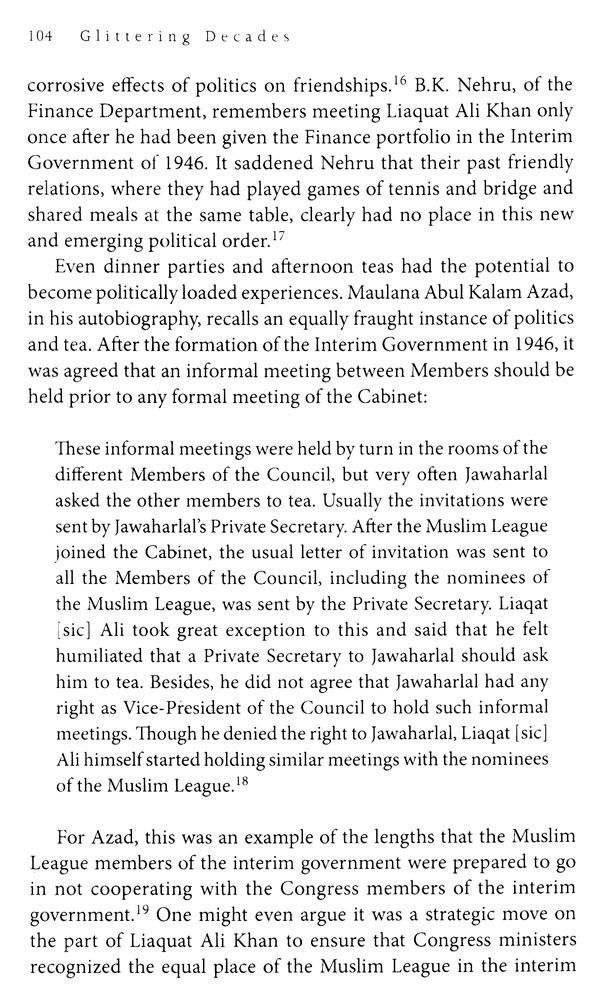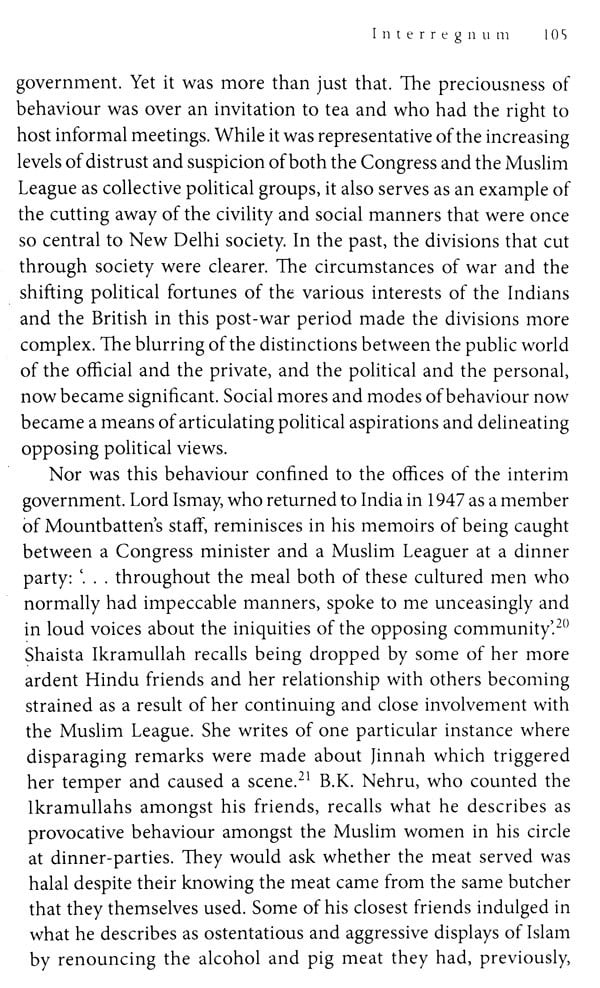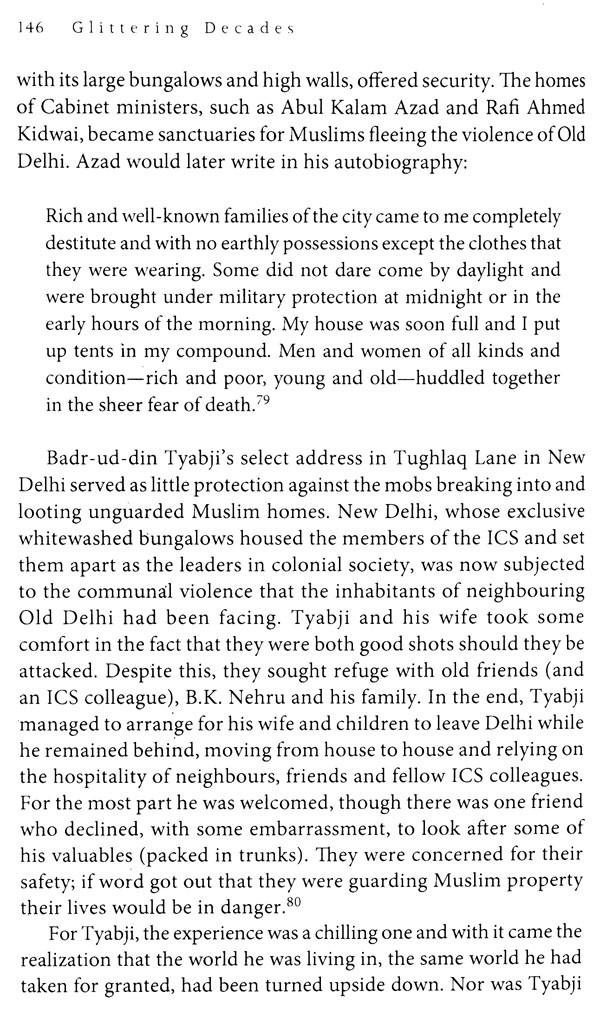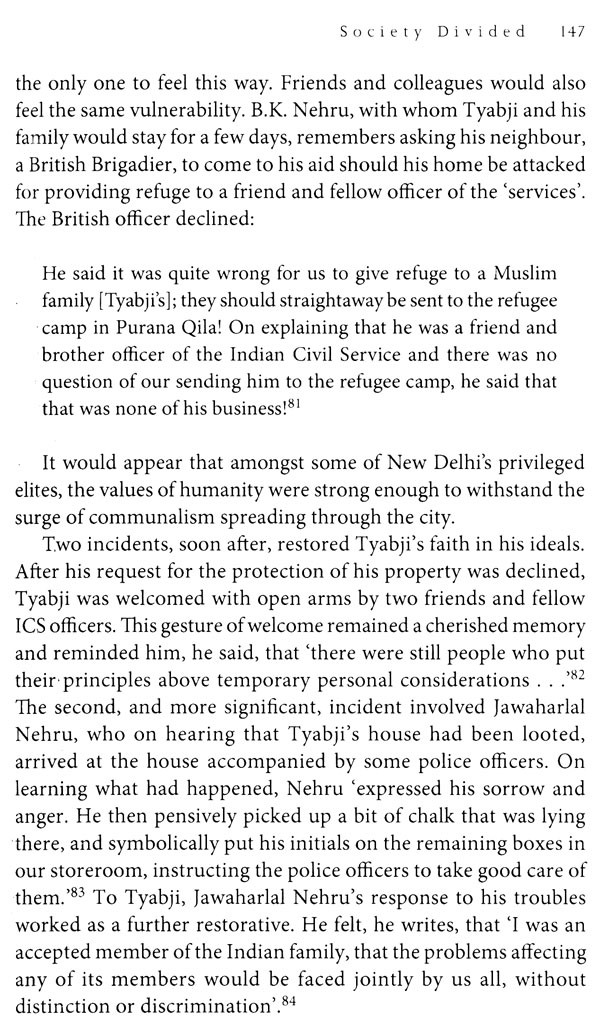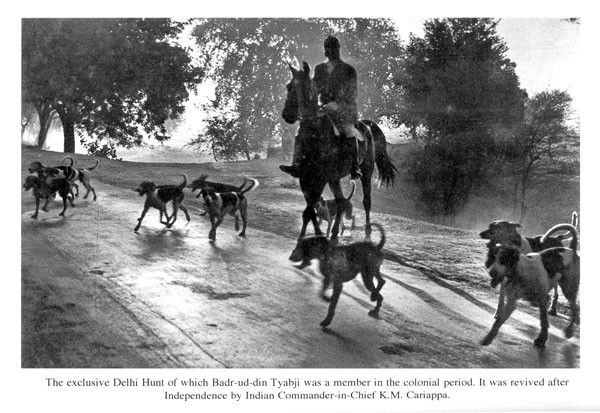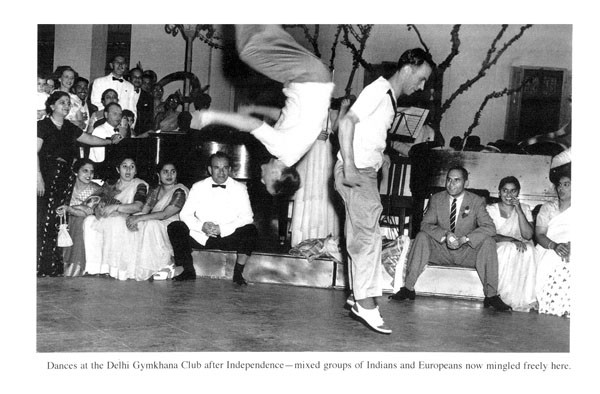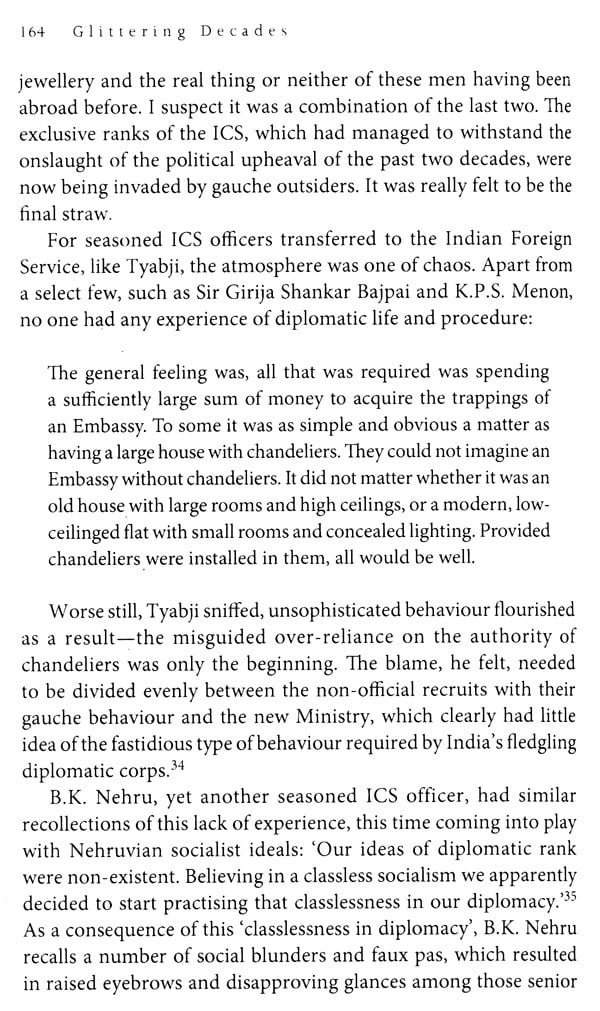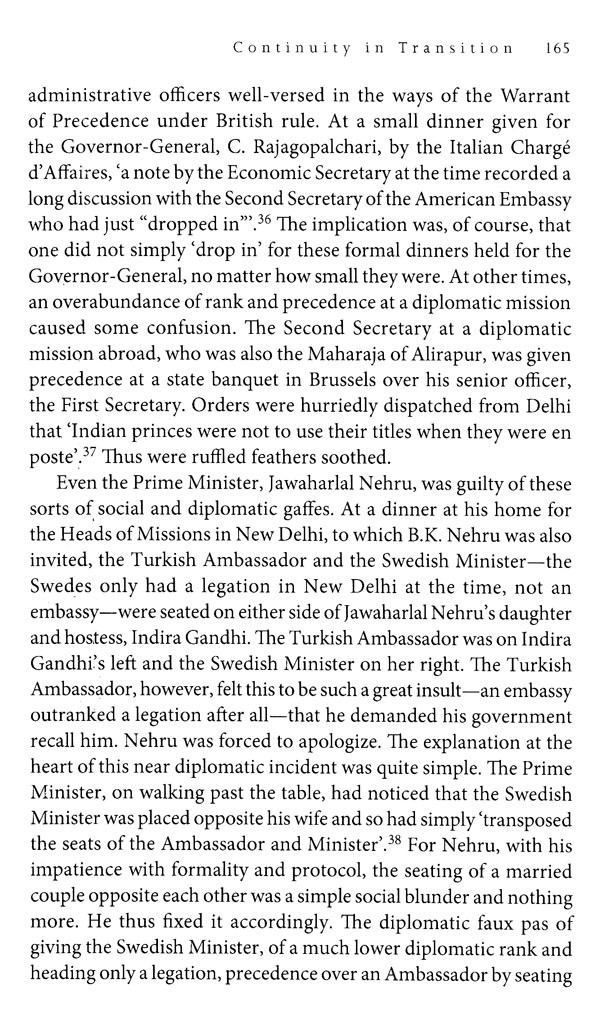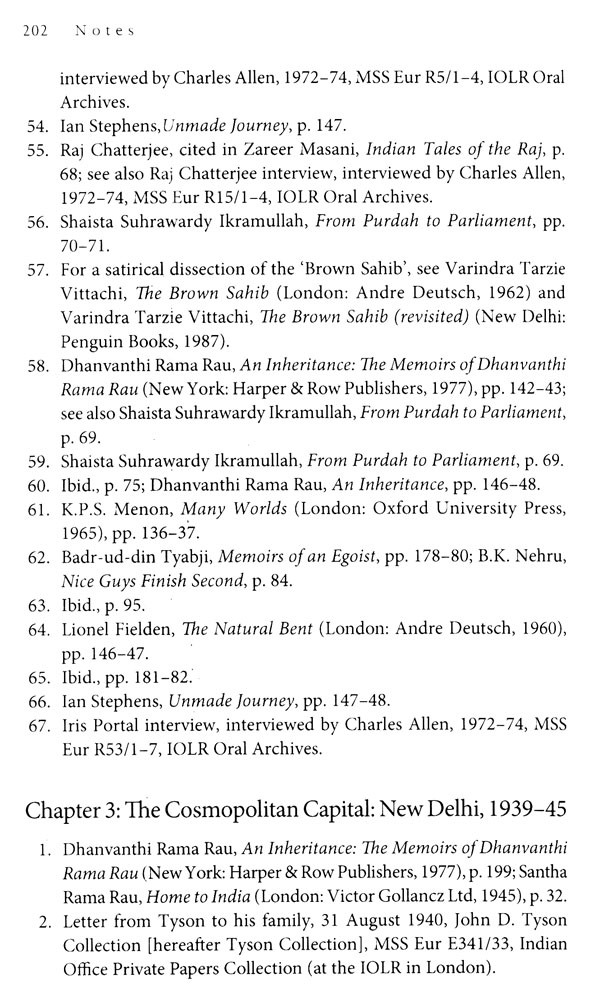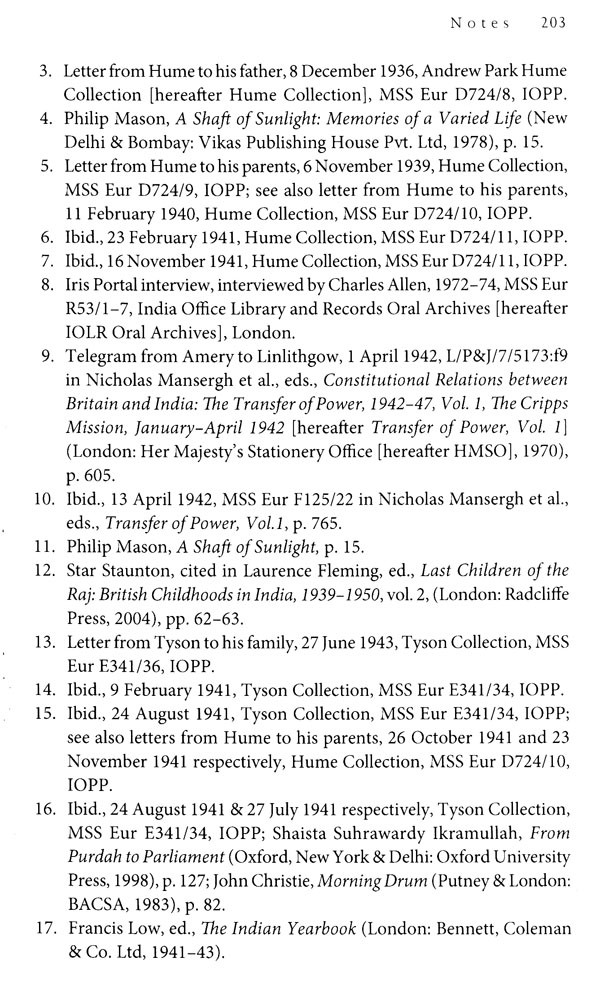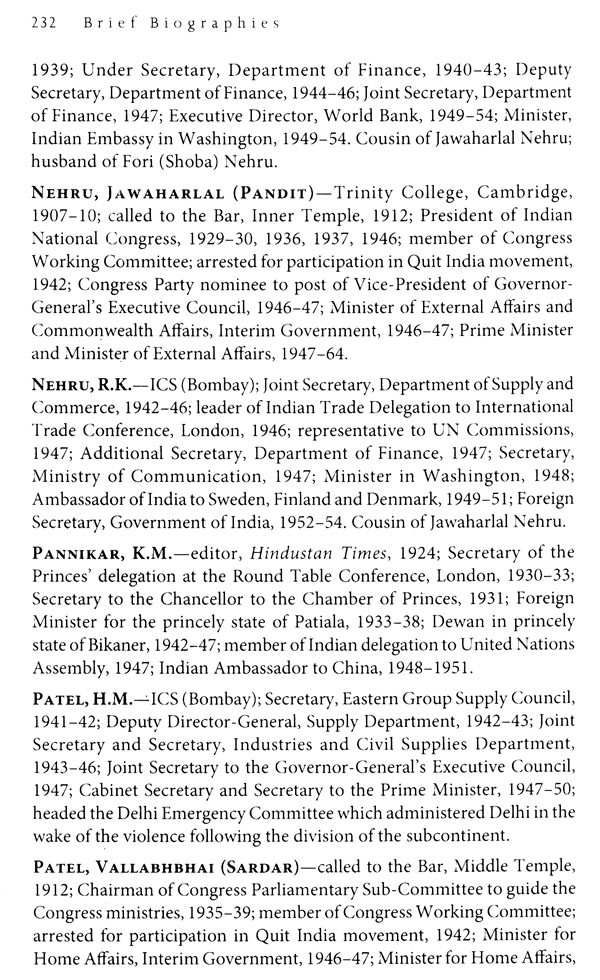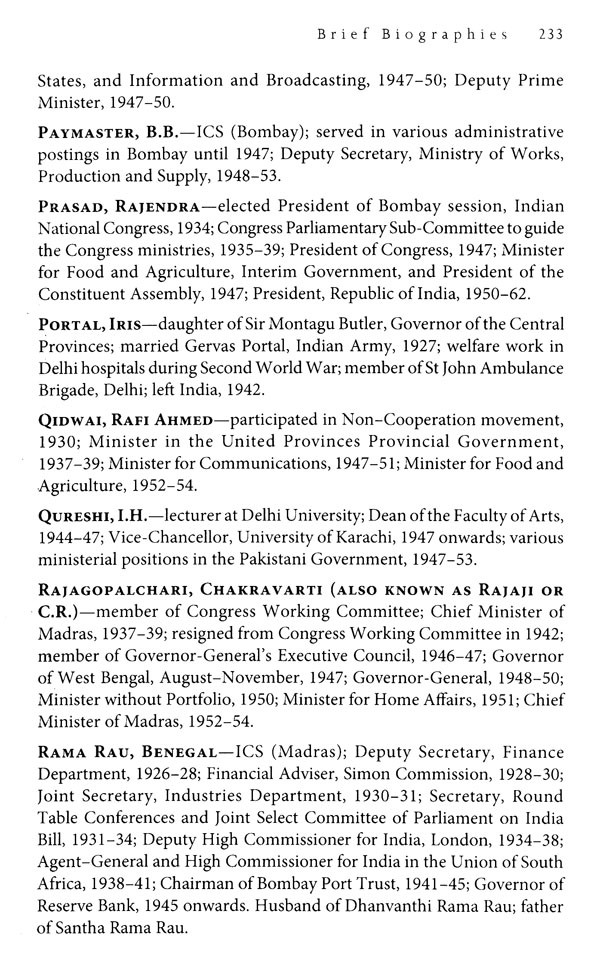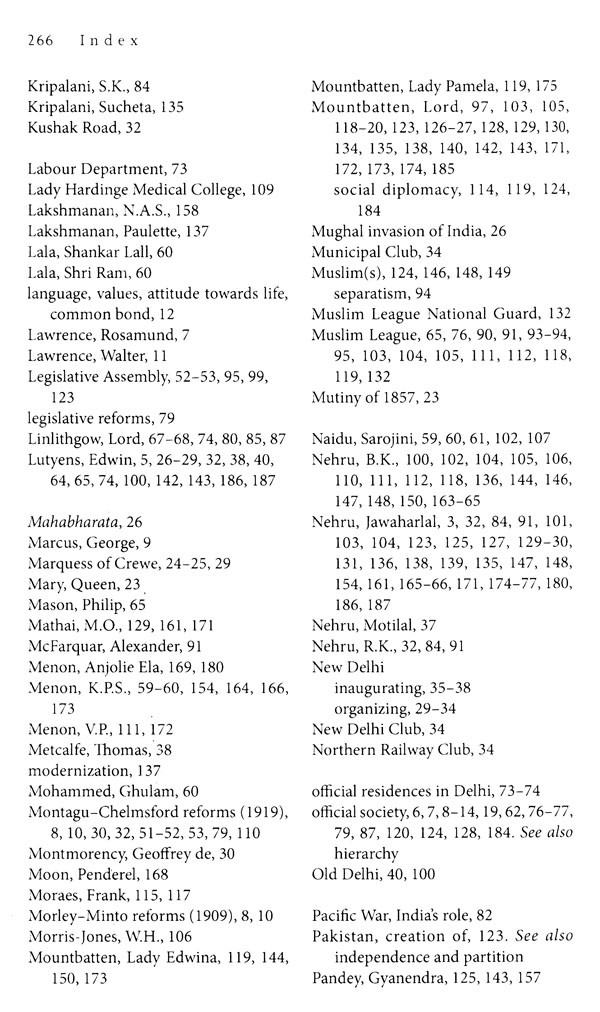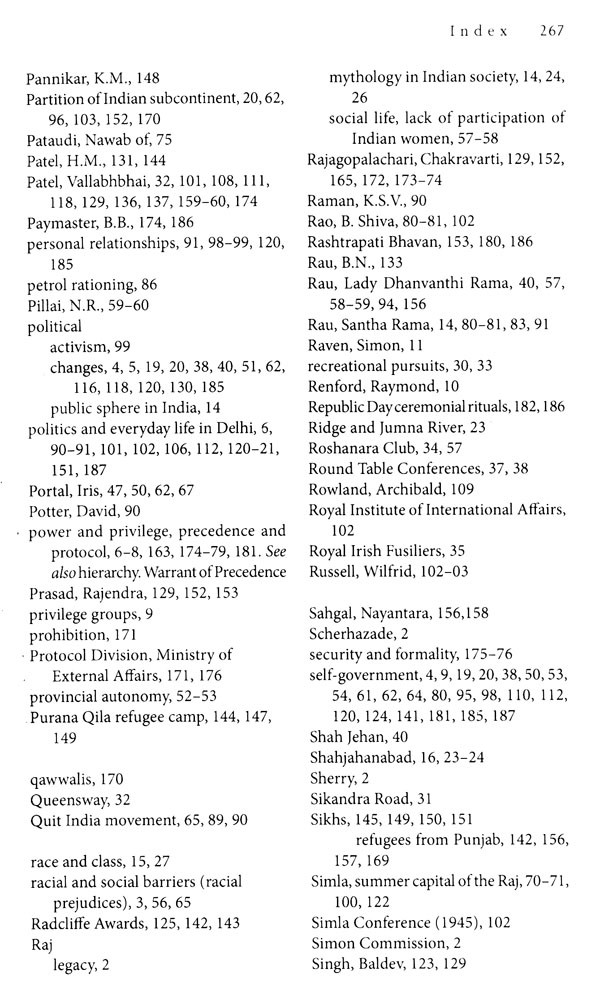
Glittering Decades- New Delhi in Love and War
Book Specification
| Item Code: | UBE575 |
| Author: | Nayantara Pothen |
| Publisher: | Penguin Random House India Pvt. Ltd. |
| Language: | English |
| Edition: | 2012 |
| ISBN: | 9780670086009 |
| Pages: | 276 (Throughout B/w Illustrations) |
| Cover: | HARDCOVER |
| Other Details | 9.00 X 6.00 inch |
| Weight | 430 gm |
Book Description
In the heyday of the British Raj, strict social and racial hierarchies governed the social life of the city's ruling elites. And the frivolity of New Delhi's high society was kept in check by a faithful adherence to etiquette and protocol in everyday life. For example, the sixteen- button glove at a formal viceregal dinner party was of great importance as a means of maintaining the authority of the Raj. But the 1930s and 1940s were a period of transition. The political shifts associated with India's journey to self-government were echoed in the social codes of conduct adopted by the Indian elites of New Delhi, and undermining the Raj's pomp became a legitimate means of challenging its authority.
Closely examining the role of social ritual, interaction and behavior in the shaping of the city and its elite groups, Glittering Decades tells the story of New Delhi and its privileged inhabitants between 1931 and 1952.
It must be stressed that, situated in a very specific social setting. it was a very specific Indian self that I was relearning. Baldly stated, my family in India is privileged; the position they occupy in Indian society, and by extension the position that I occupy when I am in India, allows them to lead very comfortable lives in comparison with the vast majority of the Indian population. This, then, is the India that I am a part of. It is not the 'Incredible India' of tourism advertisements, nor the India of aid appeals, although these are equally a part of the Indian world that I experience. It is not unusual, in this India to which I was reintroduced, for remnants of the Raj to emerge in the daily lives of my grandparents, for it is in their home that this is most prevalent. An Oxbridge education is still considered matchless, lunch is served on the lawn in winter and Bloody Marys continue to be mixed as the sun goes down. Even the ubiquitous club still maintains its, admittedly tenuous, grip on the family as a place to visit, to meet friends and present family members visiting from abroad.
In the middle of my personal soul-searching, India celebrated fifty years of independence.
**Contents and Sample Pages**
